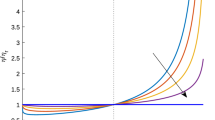Abstract
The traffic engineering of IP networks requires accurate characterization and modeling of network traffic, due to the growing diversity of multimedia applications and the need to efficiently support QoS differentiation in the network. In recent years several types of traffic behavior, that can have significant impact on network performance, were discovered: long-range dependence, self-similarity and, more recently, multifractality. The extent to which a traffic model needs to incorporate each of these characteristics is still the subject of much research. In this work, we address the modeling of network traffic multifractality by evaluating the performance of four models, which cover a wide range of traffic types, as mathematical descriptors of measured traffic traces showing multifractal behavior. We resort to traffic traces measured both at the University of Aveiro and at a Portuguese ISP. For the traffic models, we selected a Markov modulated Poisson process as an example of a Markovian model, the well known fractional Gaussian noise model as an example of a self-similar process and two examples of models that are able to capture multifractal behavior: the conservative cascade and the L-system. All models are evaluated comparing the density function, the autocovariance and the loss ratio queuing behavior of the measured traces and of traces synthesized from the fitted models. Our results show that the fractional Gaussian noise model is not able to perform a good fitting of the first and second order statistics as well as the loss rate queuing behavior, whereas the Markovian, the conservative cascade and the L-system models give similar and very good results. The cascade and the L-system models are multifractal in the sense that they are able to capture and synthesize traffic multifractality, thus the obtained results are not surprising. The good performance of the Markovian model can be attributed to the parameter fitting procedure, that aggregates distinct subprocesses operating in different time scales, and matches closely both the first and second order statistics of the traffic. The poor performance of the self-similar model can be explained mainly by its lack of parameters.
Similar content being viewed by others
References
P. Abry, P. Flandrin, M. Taqqu and D. Veitch, Wavelets for the analysis, estimation and synthesis of scaling data, in: Self-Similar Network Traffic Analysis and Performance Evaluation, eds. K. Park and W. Willinger (1999).
A. Andersen and B. Nielsen, A Markovian approach for modeling packet traffic with long-range dependence, IEEE Journal on Selected Areas in Communications 16(5) (1998) 719–732.
A. Erramilli, O. Narayan, A. Neidhardt and I. Saniee, Performance impacts of multiscaling in wide area TCP/IP traffic, in: Proc. of INFOCOM'2000, 2000.
A. Feldmann, A.C. Gilbert, P. Huang and W. Willinger, Dynamics of IP traffic: A study of the role of variability and the impact of control, in: Proc. of SIGCOMM, 1999, pp. 301–313.
A. Feldmann, A. Gilbert and W. Willinger, Data networks as cascades: Investigating the multifractal nature of Internet WAN traffic, in: Proc. of SIGCOMM, 1998, pp. 42–55.
J. Gao and I. Rubin, Multifractal analysis and modeling of long-range-dependent traffic, in: Proc. of ICC'99, June 1999, pp. 382–386.
A. Gilbert, W. Willinger and A. Feldmann, Scaling analysis of conservative cascades, with applications to network traffic, IEEE Transactions on Information Theory 45(3) (1999) 971–992.
S. Kang and D. Sung, Two-state MMPP modelling of ATM superposed traffic streams based on the characterisation of correlated interarrival times, in: IEEE GLOBECOM'95, November 1995, pp. 1422–1426.
S. Li and C. Hwang, On the convergence of traffic measurement and queuing analysis: A statisticalmatch and queuing (SMAQ) tool, IEEE/ACM Transactions on Networking 5(1) (February 1997) 95–110.
B. Mandelbrot, Intermittant turbulence in self-similar cascades: Divergence of high moments and dimensions of the carrier, Journal of Fluid Mechanics 62 (1974) 331–358.
K. Meier-Hellstern, A fitting algorithm for Markov-modulated Poisson process having two arrival rates, European Journal of Operational Research 29 (1987) 370–377.
I. Norros, A storage model with self-similar input, Queueing Systems 16 (1994) 387–396.
C. Nunes and A. Pacheco, Parametric estimation in MMPP(2) using time discretization, in: Proc. of the 2nd Internat. Symposium on Semi-Markov Models: Theory and Applications, December 1998.
V. Paxson, Fast approximation of self-similar network traffic, Technical Report, Lawrence Berkeley Laboratory and EECS Division, University of California (April 1995).
H. Peitgen, H. Jurgens and D. Saupe, Chaos and Fractals: New Frontiers of Science (Springer, Berlin, 1992).
R. Riedi, M. Crouse, V. Ribeiro and R. Baraniuk, A multifractal wavelet model with application to network traffic, IEEE Transactions on Information Theory 45(4) (1999) 992–1018.
R. Riedi and J. Véhel, Multifractal properties of TCP traffic: A numerical study, Technical Report No. 3129, INRIA Rocquencourt, France (1997); available at www.dsp.rice.edu/~riedi.
P. Salvador, A. Nogueira and R. Valadas, Modeling multifractal traffic with stochastic L-Systems, in: Proc. of GLOBECOM 2002, November 2002.
P. Salvador, A. Nogueira and R.Valadas, Scaling behavior analysis of multifractal traffic models based on stochastic L-systems, Technical Report, University of Aveiro (2002).
P. Salvador, A. Pacheco and R. Valadas, Multiscale fitting procedure using Markov modulated Poisson processes, Telecommunications Systems 23(1/2) (2003) 123–148.
P. Salvador and R. Valadas, A fitting procedure for Markov modulated Poisson processes with an adaptive number of states, in: Proc. of the 9th IFIP Working Conf. on Performance Modelling and Evaluation of ATM & IP Networks, June 2001.
P. Skelly, M. Schwartz and S. Dixit, A histogram-based model for video traffic behaviour in an ATM multiplexer, IEEE/ACM Transactions on Networking 1(4) (August 1993) 446–458.
J. Véhel, Fractal and multifractal Internet traffic, in: Business Briefing: Global Optical Communications, 2002.
D. Veitch and P. Abry, A wavelet based joint estimator for the parameters of LRD, IEEE Transactions on Information Theory 45(3) (1999).
Author information
Authors and Affiliations
Rights and permissions
About this article
Cite this article
Nogueira, A., Salvador, P., Valadas, R. et al. Modeling Network Traffic with Multifractal Behavior. Telecommunication Systems 24, 339–362 (2003). https://doi.org/10.1023/A:1026183318200
Issue Date:
DOI: https://doi.org/10.1023/A:1026183318200




